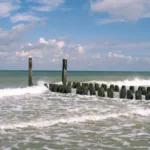In today’s highly competitive marketplace, packaging is one of the most critical aspects of product design. It protects the product during transportation and plays a crucial role in marketing and sales. The bottle necker is one type of packaging that has gained popularity in recent years. Custom Bottle neckers are an effective way to grab the attention of potential customers and convey important product information. In this article, we’ll discuss the advantages of bottle neckers in packaging, the materials used in their creation, design tips, and implementation best practices.
Advantages of Bottle Neckers in Packaging
They offer several advantages over traditional packaging. First and foremost, they save space. Standard packagings, such as boxes and sleeves, occupy a significant room on store shelves. On the other hand, these are compact and can be attached directly to the product, freeing up space on the shelf.
Another advantage of these neckers is their cost-effectiveness. Compared to other forms of packaging, such as custom boxes or shrink sleeves, they are relatively inexpensive to produce. This makes them an attractive option for small businesses or those with a limited budget.
The most significant advantage of neckers is their eye-catching design. A well-designed bottle necker can draw the customer’s attention to the product, making it stand out from the rest of the items on the shelf. This can be especially important for new products or those that need to be better known.
These neckers also offer increased brand recognition. By including the company’s logo or other branding elements on the bottle necker, customers will be more likely to remember the product and the company that produced it. This can lead to increased sales and customer loyalty.
Finally, they provide a convenient way to convey important product information to customers. This can include ingredients, nutritional information, or usage instructions. By placing this information directly on the bottle necker, the customer can easily access it without searching for it on the packaging.
Materials Used in Bottle Neckers
Custom Bottle neckers can be made from various materials, including paper, cardstock, vinyl, and plastic. Each material has its own set of advantages and disadvantages.
- Paper is the most common material used for these neckers. It is affordable, easy to print on, and environmentally friendly. However, it may not be as durable as other materials and may not hold up well in humid or wet environments.
- Cardstock is a thicker and more durable paper material. It is ideal for neckers that will be handled frequently or exposed to moisture. However, it is more expensive than standard paper.
- Vinyl is famous for these neckers because it is waterproof and durable. It can withstand exposure to water, oil, and other liquids without fading or smudging. However, it is more expensive than paper or cardstock.
- Plastic is the most durable material used for neckers. It is waterproof, tear-resistant, and can withstand exposure to various temperatures. However, it is also the most expensive material and may not be as environmentally friendly as other options.
Designing Bottle Neckers
Designing a bottle necker is an essential step in the Custom packaging process. A well-designed bottle necker can help to increase sales and customer loyalty. Here are some tips for designing an effective bottle necker:
· Colours
Bold colors can help to grab the customer’s attention and make the product stand out.
· Right Font
The font should be easy to read and complement the product’s branding.
Images
Images can convey the product’s features and benefits. They should be clear and of high quality.
· Design
A cluttered design can be overwhelming and may turn customers away. Keep the design simple and easy to read.
· Features
Use the bottle necker to showcase the product’s unique features and benefits. This can help to differentiate the product from its competitors.
· Consistent
The bottle necker should be consistent with the product’s branding and overall marketing strategy. This can help to increase brand recognition and customer loyalty.
Implementation of Bottle Neckers in Packaging
Implementing neckers for bottles in packaging can present some challenges. For example, attaching the bottle necker to the product can be tricky.
- Use a high-quality adhesive: The adhesive to attach the bottle Necker to the product should be solid and durable. This can help to prevent the bottle necker from falling off or becoming damaged during transportation.
- Consider the placement of the bottle Necker: The bottle necker should be placed in a prominent location where the customer can easily see it. This can be on the neck of the bottle or the cap.
- Test the bottle necker before production: Before producing a large batch of neckers, it’s a good idea to ensure they attach correctly to the product and stay in place during transportation.
When choosing materials for the bottle necker, it’s essential to consider the environmental impact. Choosing eco-friendly materials can reduce the product’s carbon footprint and appeal to environmentally conscious customers.
FAQs
What are bottle neckers?
This type of packaging is attached to the neck of a bottle or container. They can convey important product information, increase brand recognition, and grab customers’ attention.
What materials are used to make them?
They can be made from various materials, including paper, cardstock, vinyl, and plastic. Each material has advantages and disadvantages, depending on the product and its intended use.
How do I design an effective bottle necker?
To design an effective bottle necker, you should use eye-catching colors, choose the right font, include high-quality images, keep the design simple, highlight the product’s unique features, and be consistent with branding.
How do I attach the bottle necker to the product?
Attaching the bottle necker to the product can be done using a high-quality adhesive. Testing the bottle necker before production is essential to ensure that it attaches appropriately and stays in place during transportation.
Are bottle neckers environmentally friendly?
They can be made from eco-friendly materials, such as recycled paper or biodegradable plastic. When choosing materials for the bottle necker, it’s essential to consider the environmental impact and appeal to environmentally conscious customers.
Can neckers be used for products other than bottles?
Yes, neckers can be used for various products, such as jars, cans, and other containers. They can be customized to fit the size and shape of the product, making them a versatile packaging solution.
Conclusion
Custom Bottle neckers are an effective way to grab the customer’s attention and convey important product information. They offer several advantages over traditional packaging, including space-saving, cost-effectiveness, and increased brand recognition. Businesses can improve sales and customer loyalty by using high-quality materials and designing an effective bottle necker. Implementing best practices, such as using a high-quality adhesive and considering the environmental impact, can help ensure a successful packaging campaign.






Comments closed.